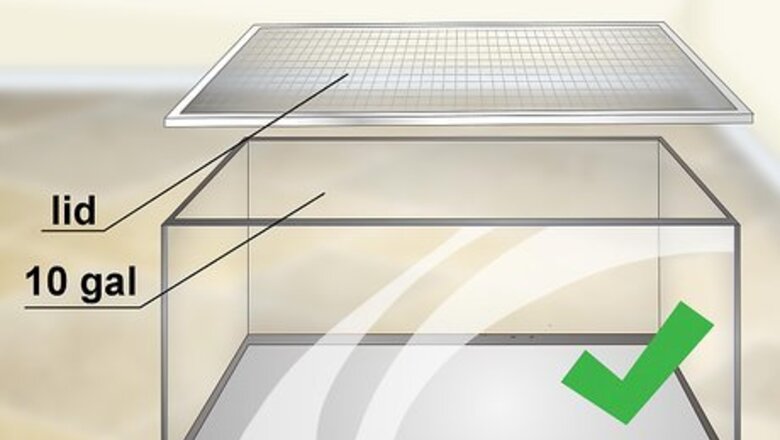
views
Creating the Right Environment
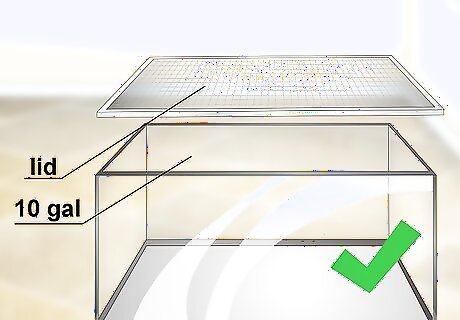
Buy an aquarium with a screen lid. Tokay geckos love a lot of space. For one gecko, a 10 gallon (38 liters) tank is perfect. If you are going to have two, you need at least a 20 gallon (76 liters) tank. Make sure you have a lid for the tank. Choose a mesh one with small holes that the gecko can’t get out of. You may also choose a tank that has a sliding door at the front instead of a lid. Because Tokays are so aggressive, limit each aquarium to two geckos. Never house two mature males together; they will fight to the death! If you must have two, opt for a male and a female.
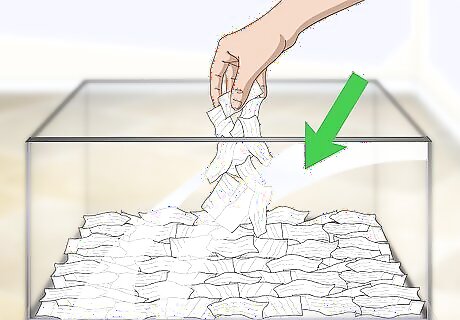
Place substrate in the bottom. Substrate is a liner of material in the bottom of the tank that the gecko can burrow in. Black and white newspaper or paper towels make good substrate. Place a layer of one to two inches (2.5 to 5 cm) in the bottom of the cage. Don't use newspaper with colored ink because colored ink can include chemicals that are harmful to your gecko.
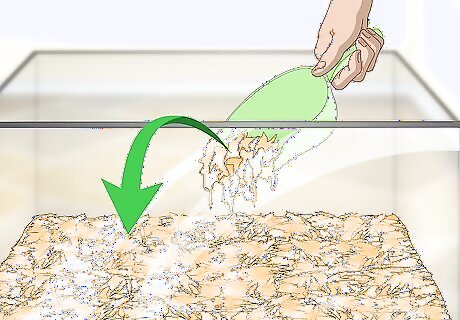
Add a layer of cypress mulch or orchid bark on top of the substrate. Next, you should add a line of material that will help hold humidity. The cage’s humidity should be between 60 to 80 percent. Regulating the humidity is important to keeping the gecko healthy. Two of the best substances to use are cypress mulch and orchid bark. Sprinkle a thin layer that just covers the surface of the substrate. Add a thin layer of long-fiber sphagnum moss over everything, similar to the layer of mulch. It will help contain the mess. Other substances, like cedar chips, can contain hazardous materials for your gecko. They may also injure your gecko.
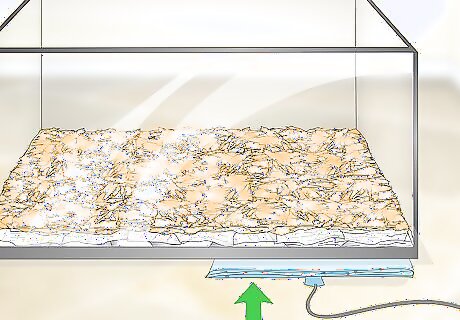
Add a heat source. Geckos need a warm environment, so you have to add a heat source. One good way to do this is to place a heating mat made for reptile tanks under the tank. A Tokay gecko should have a tank that’s between 80 to 85 °F (26.7 to 29.4 °C) (26 to 29ºC). Use a thermometer to regulate the temperature of the tank. The gecko can deal with nighttime temperatures that dip to the mid-70s (23 to 25ºC).
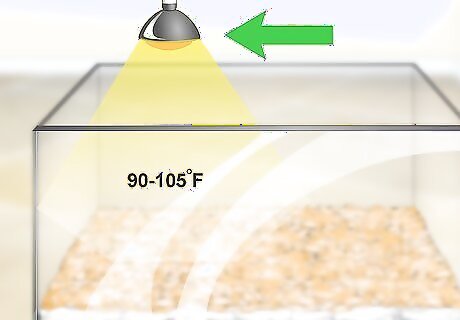
Create a basking spot. In addition to a warm, humid tank, the gecko needs a basking spot to lie on that is hotter than the rest of the cage. Set up a heat spot with red light bulbs or a ceramic heat emitter. This area should be between 90 to 105 degrees (32 to 40ºC). Use a separate thermometer on this side of the cage to monitor the temperature. Don’t use a light source that uses UVA heat because this can burn your gecko.
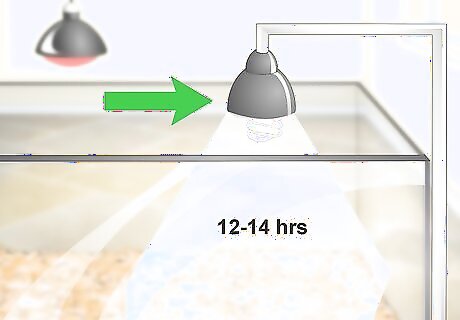
Create a day and night cycle. Tokay geckos are nocturnal, which means they are active at night and sleep during daylight hours. You need to set up a light cycle for the tank that mimics day and night. Twelve to fourteen hours of daylight followed by a night time cycle should be good. Use a UVB-emitting fluorescent bulb to create the artificial daylight. Use a timer and set the light to 12 to 14 hours. Leaving the light on more than this can stress your gecko.
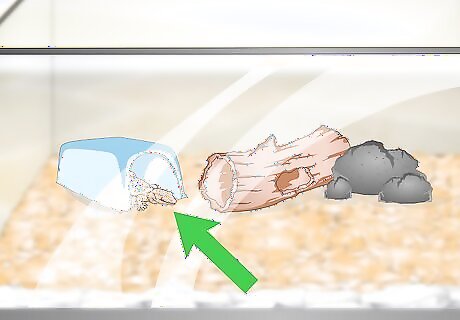
Add a hiding spot. Tokay geckos like to hide, especially during the day while they sleep. Any kind of hiding area will suffice, including fake caves, boxes, tunnels, logs, PVC pipes, or bamboo tubes. Put one hiding spot on the warm side of the tank where the basking spot is, and place another on the cool side. This allows your gecko to hide in a cool or warm spot. A full cage with many hiding spots behind rocks and under items will make your gecko happy. They love a cluttered cage, and spent almost all of their time hiding or sleeping (while hiding), so create as many hiding spots as you wish. Don’t add anything to the cage that isn't fake, such as rocks or wood from your yard. Also make sure none of the objects have sharp edges that could cut your gecko.
Feeding Your Gecko
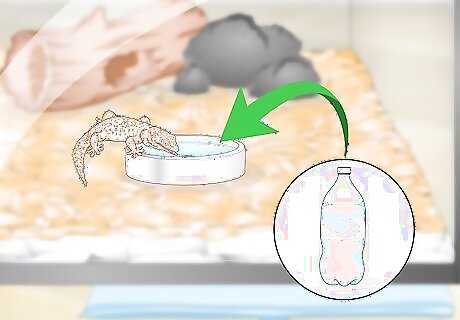
Mist lukewarm water into the cage every day for your gecko to drink. Your gecko needs a source of clean water to drink, but they really don't like drinking out of bowls. They prefer to drink water droplets off of leaves and rocks. Use a spray bottle to mist the tank with water twice each day so there are droplets on plants and walls for the gecko to lick off. Bottled spring water is a safe option. If you use tap water, make sure you let it sit in a bowl for at least a day to get rid of any chemicals. If you don't want to use bottled water, you can add dechlorinating reptile tablets to the tap water to make it safe to drink without letting it sit for a day.
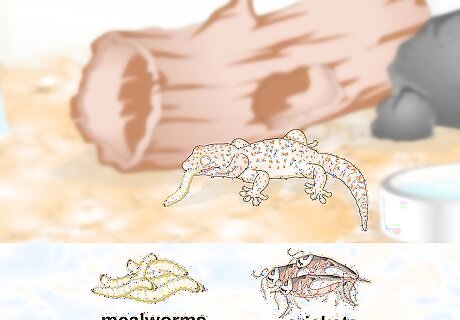
Feed your gecko live insects. Geckos should be fed live insects for their meals. Crickets and mealworms are the most common insects fed to geckos. Any food should be small enough that your gecko can fit it into its mouths. Feed your gecko around four to six insects three times each week. Only place enough insects into the tank that your gecko can eat in around 10 minutes. Make sure the insects are alive when you feed them to your gecko. They won’t eat dead insects. Keep them in a container that has ventilation. Remove all dead crickets from the tank. You should also remove any live insects that your gecko doesn’t eat so the insects don’t hurt your gecko.
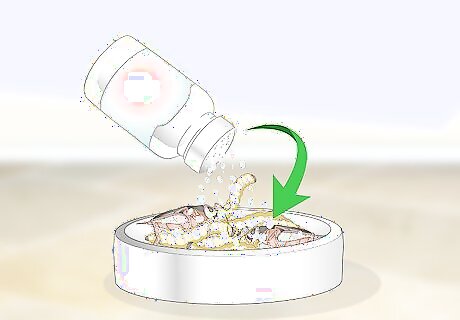
Add a vitamin supplement to the insects. Your gecko needs additional nutrients they can’t get from insects. You can dust the vitamins on the insects so they will get the nutrients when they eat them. Buy calcium powder that contains D3 to sprinkle on top of the insects you’re feeding your gecko once each week. After dusting the insects, they will be covered in the vitamins. Feed these insects to your gecko immediately. Dust the insects so they only have a very light layer coating them.
Addressing Your Gecko's Needs
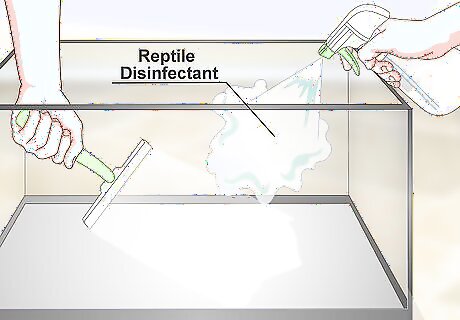
Clean the tank often. Each day, remove dead insects and use a cloth to wipe down any feces on the side of the tank or on objects. Every couple of weeks to once a month, you should do a thorough cleaning of the tank. Remove and replace all of the substrate. You should also wash and disinfect the tank with a reptile disinfectant. Avoid using regular household disinfectant for this. Visit a pet store or order reptile disinfectant online to keep your gecko healthy. Move the gecko to a dark, quiet, safe area while you clean. Placing them in a dark and quiet environment can help reduce their stress during the process. You can use an extra aquarium or large box. Place it in a dark room and close the door.

Up the humidity overnight if shedding skin is clinging to your gecko. Tokays shed their skins several times during their lives. They like to eat the skin as it sheds, so in most cases you won't need to intervene. If you notice stubborn bits clinging to your gecko, place a small box close to one of the heating sources in the aquarium. Dampen several paper towels and place them inside the box. The damp towels turn the box into a humid enclosure for your gecko. The gecko will hang out in the box overnight and by morning, the stubborn skin will be gone or can be easily removed.
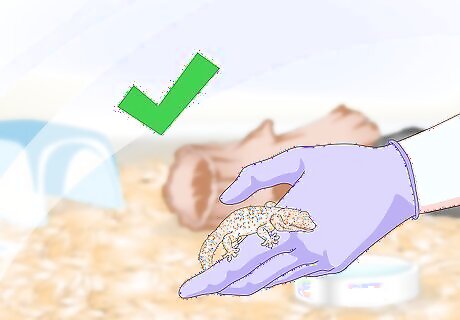
Handle your gecko only if you have to. Tokay geckos do not like to be handled. They will bite you if they have not been tamed. Only handle your Tokay gecko if you absolutely have to. When you pick it up, try using a glove or a cloth over your hand to protect it from a bite. If you want to use your bare hands, make sure to wash them well with hot water and soap before and after handling. Never pick your gecko up by the tail because it can detach. Instead, pick it up from the middle.

Tame your gecko slowly with short, positive handling sessions. Try to get the gecko to sit on your hand every day for 30 seconds or so without you having to restrain it or hold it in place. Work your way up to longer sessions from there. If your gecko seems a bit freaked out or tries to bite you, scale back the sessions and slowly work back up to longer sessions. This is a long, slow process. It will takes months to gain its trust. In some cases, it may never happen at all. Keep in mind this is your gecko's natural disposition! Don't be offended if you're unable to tame it as much as you'd like.
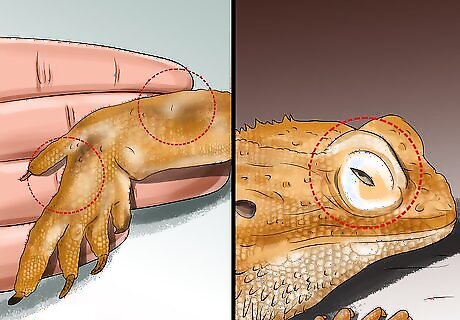
Watch out for signs of lethargy, cloudy eyes, and poor appetite. These are all signs that something is definitely wrong with your gecko. Bring your gecko to see a specialized vet if you notice any of these things. Aggression, anxiety, and general high-strung behavior are all perfectly normal for a Tokay gecko and no cause for alarm.















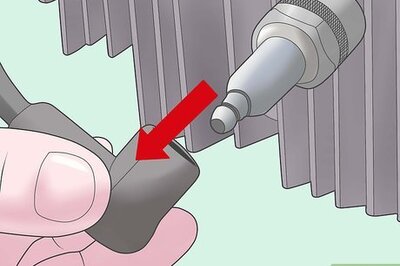


Comments
0 comment